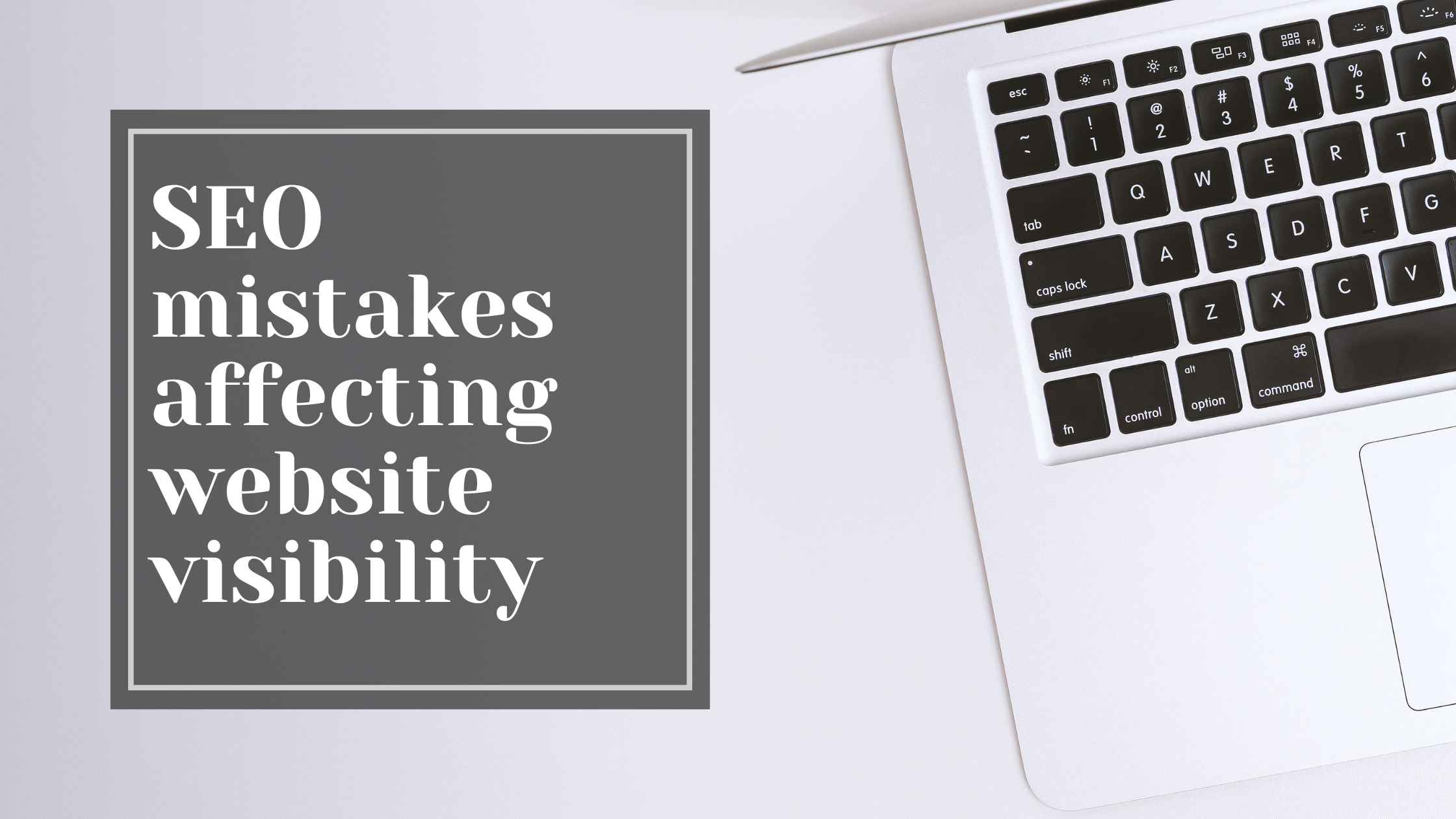5 SEO Mistakes That Are Killing Your Visibility — and How to Fix Them


If your website isn't showing up where it should in search results, the problem might not be your content alone. Sometimes the biggest threats to your visibility are the silent, hidden SEO mistakes you don't even realize you're making.
Search engine optimization is a long game, but it's also precise. You need the right keywords, a technically healthy site, a clear structure, fresh content, and an experience that engages visitors. Missing even one of these elements can slowly drag your rankings down.
Here are the five most common SEO mistakes that could be holding you back—and what you can do to fix them for good.
Keyword targeting is the foundation of SEO. Suppose you're using broad, generic keywords. In that case, you're competing with massive brands and attracting visitors who aren't really looking for what you offer. You might be optimizing for terms that don't match the search intent of your ideal audience.
Why it's a problem
Search engines try to match content to user intent. If your keywords are too vague, you get lost among thousands of results or bring in the wrong traffic. This leads to high bounce rates and low conversions.
How to fix it
Example
If you run an online bakery, instead of targeting "cake," you could target "custom vegan birthday cakes delivered in Los Angeles." This keyword is clear, specific, and aimed at a motivated buyer.
Technical SEO is the behind-the-scenes structure that allows search engines to find, understand, and index your site. You could have the best content in the world, but your rankings will suffer if search engines can't properly crawl your pages.
Common technical SEO mistakes
How to fix it
Maintaining a technically healthy site removes invisible barriers that could prevent your pages from ranking.
Think of internal links as the roads connecting the neighborhoods of your website. Without them, you have isolated "islands" of content that search engines may struggle to find or rank.
Why it matters
Internal links help search engines understand your site's structure and distribute authority from one page to another. They also guide visitors to related content, increasing time on site and improving user experience.
Best practices
Example
If you have a blog post about "How to Brew Cold Brew Coffee" and a product page for your cold brew coffee beans, link them with relevant, keyword-rich anchor text.
Strong internal linking boosts SEO and helps visitors navigate your site more effectively.
Once upon a time, stuffing a page with keywords could get you rankings. Today, search engines prioritize quality, relevance, and user satisfaction. One of the biggest SEO mistakes is creating thin, repetitive, unfocused content that doesn't fully address users' needs.
Signs of low-quality content
Why search intent matters
Every keyword comes with an intent: informational (looking for knowledge), navigational (looking for a specific page), or transactional (ready to buy). If your content doesn't match that intent, even if you rank, visitors will leave quickly—and that tells search engines your page isn't a good match.
How to improve content quality
When your content matches the keywords and their intent, you increase your chances of ranking well and keeping visitors engaged.
Content isn't a "set it and forget it" task. Even evergreen topics can become outdated over time. Leaving your content untouched for years can quickly lose relevance, accuracy, and ranking power.
What outdated content looks like
How to keep content fresh
Fresh, accurate content signals to search engines that your site is active and trustworthy—two qualities that can help your rankings.
SEO success isn't just about doing more—it's about doing the right things consistently. Avoiding these five SEO mistakes will help you:
When you fix these core issues, you create a stronger foundation for all your other marketing efforts.
1. How long will it take to see results after fixing SEO mistakes?
Most changes take two to three months to show visible results. Still, timing depends on your site's current authority, the competition in your niche, and the size of the changes you make.
2. Are keyword tools worth using?
Yes. Tools help you discover what your audience is actually searching for and identify opportunities you might miss if you guess.
3. How do I know if my content is outdated?
Check the publication date, review any stats or references, and see if the page still matches what users are looking for today.
4. Can I have too many internal links?
Yes. Overlinking can dilute the value of each link and confuse readers. Keep links relevant and purposeful.
Improving your search engine visibility isn't about chasing every new trick—it's about getting the fundamentals right. Avoiding these common SEO mistakes gives you a competitive edge that lasts. By aligning keywords with intent, fixing technical issues, building an innovative internal link structure, creating high-quality content, and keeping it updated, you set yourself up for steady, long-term growth.
Search rankings don't improve overnight, but with consistent attention to these areas, you'll see measurable results that compound over time.